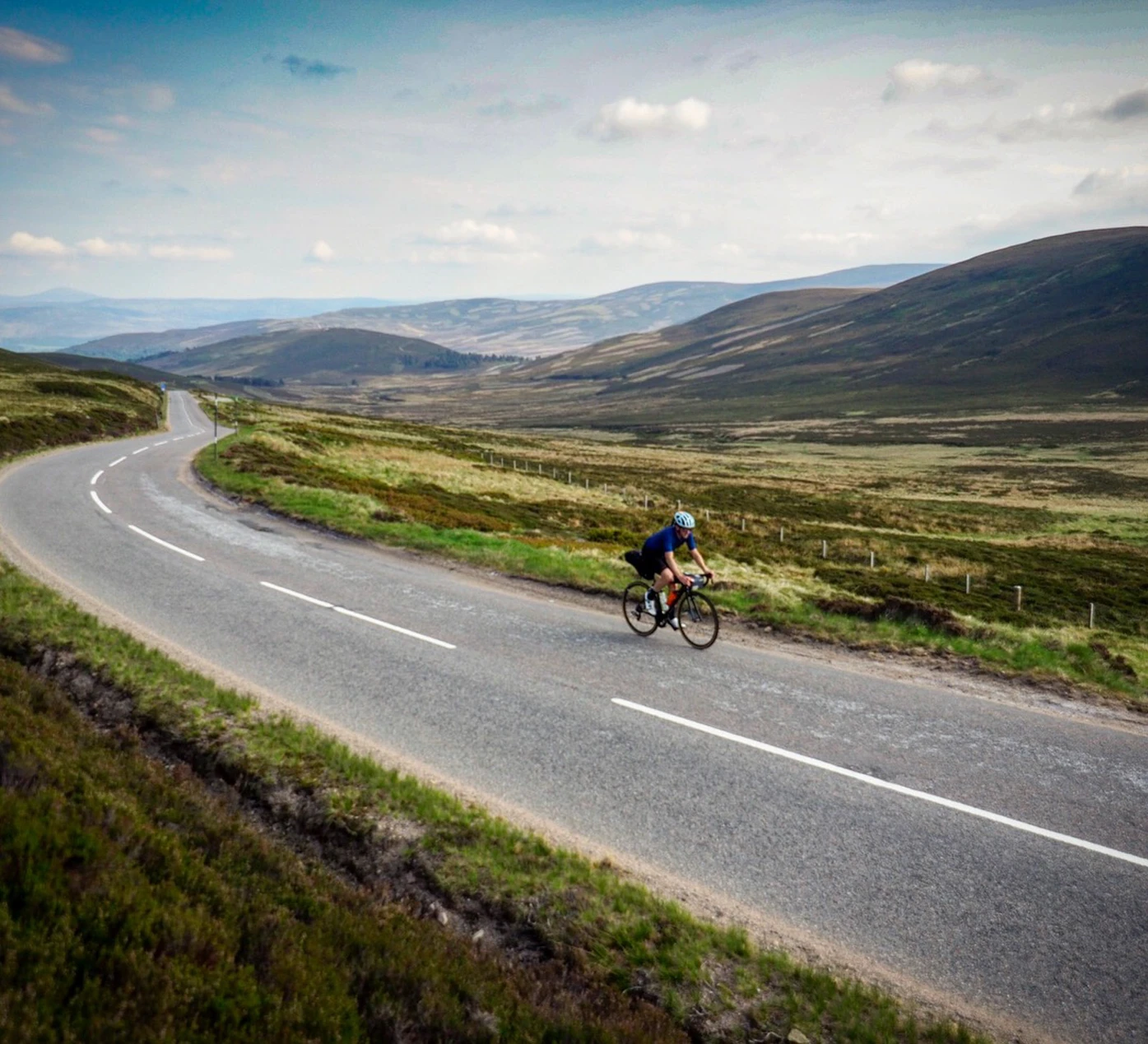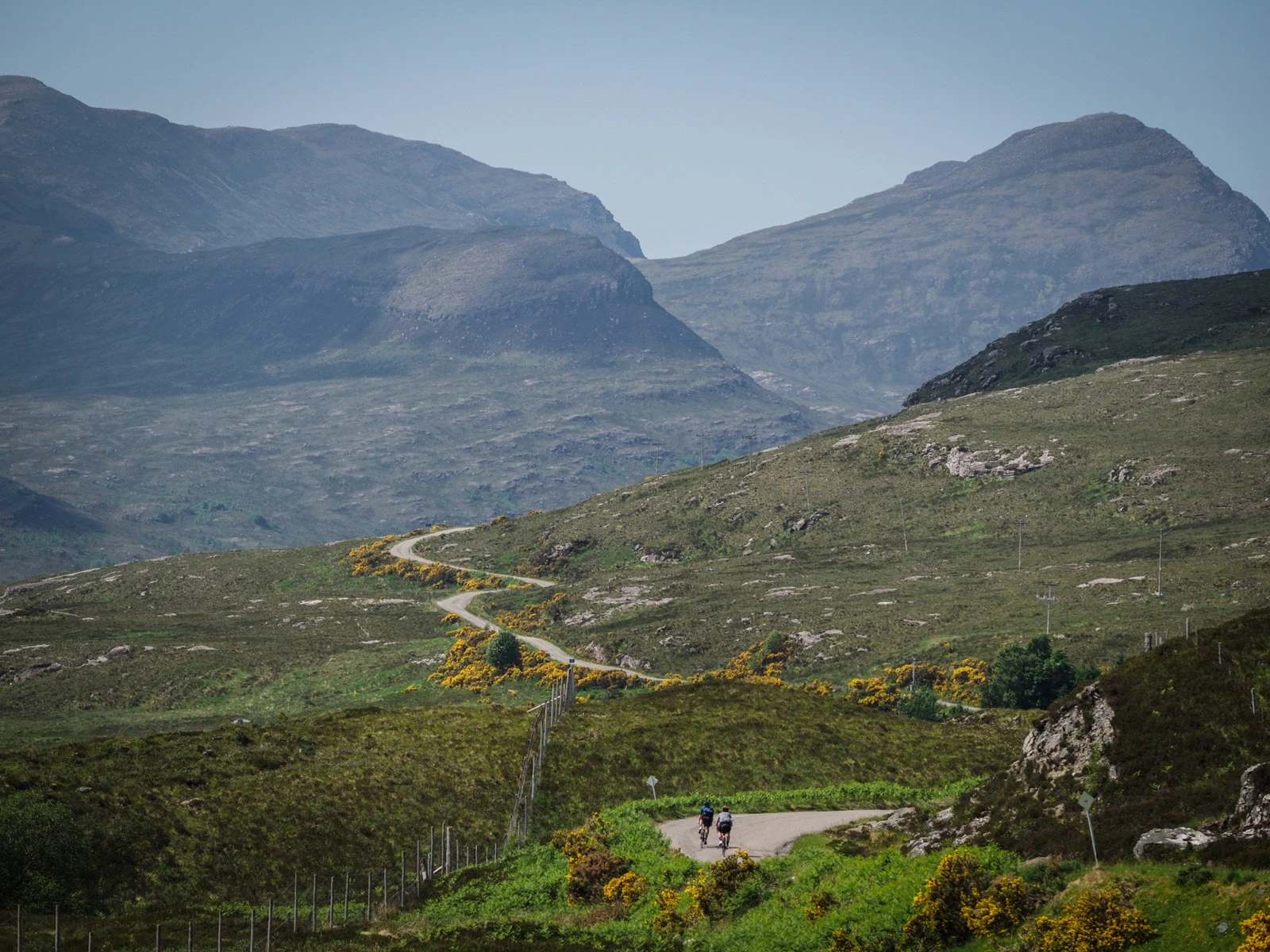Words: Selwyn Parker (European Correspondent)
Images: Marcus Enno
Just around the corner from our apartment in the city of Perth, Scotland, is a 114 year-old bike shop. Now under the shingle of J.M.Richards, it was founded by one, John Sinclair, in 1906 as a sales and repair business and has been family-run ever since. An old photograph shows the original owner standing proudly outside with an apprentice and a mechanic, all wearing blue overalls. A sign in the window advertises “New Hodson Bicycles,” a brand of yesteryear.
When the founder of the business retired in 1954 after an epic 48-year stint that would have put thousands of Scots on bicycles as well as keeping them repaired, a former RAF pilot John Richards became the new owner. And today? It’s run by his son Drew, a racer of classic motocross bikes as well as enthusiastic cyclist.
And I’ll bet J.M.Richards has never been busier because bike shops are one of the few categories of retailers that are allowed to stay open. So many people in Scotland are dusting off old dungers or buying new bikes that there’s often a queue outside the shop, maintaining a respectful two metres from each other, waiting patiently for service from Drew and his three staff, all hotshot cyclists who have been with him for decades.
Today around Scotland, you see whole families, pensioners and teenagers out on a jaunt, riding the parks and eerily quiet streets. This never happened before Covid-19. The pandemic has put the world back on bikes, both for humanitarian and health reasons. Britain’s biggest bike chain, Halfords, is maintaining the bikes of National Health Service staff – “our healthcare heroes”, says chief executive Graham Stapleton — for free and giving heavy discounts on equipment. If a low life steals one of their bikes, which they do, Halfords gives doctors and nurses a free replacement.

And that’s just Britain. Spain and Italy made a short-sighted decision to ban all but essential cycling in their cities, but other municipal authorities encouraged bikes as a safer alternative to buses and trains. “Cyclists are taking to the streets by storm,” reports New York-based cycling lobby Transportation Alternatives. New York, probably the least bike-friendly city in the America, saw a 67 per cent increase in cycling in the first week of the crisis while Philadelphia reported a 471 per cent jump. Yes, that’s 471 per cent.
Further afield, the city of Bogota in Colombia has exploited the crisis to extend its highly popular Ciclovia, a once a week ban on cars across what is now 350 miles of designated streets. As Transportation Alternatives reports, Ciclovia now happens every single day of the week. And authorities in teeming Mexico City are considering a four-fold increase in its existing bike lane network. In other cities like Paris, Zurich, Berlin, Amsterdam and London, where the £1bn cycling network is proving its worth every single day, the climate-friendly virtues of human-powered transport are being showcased. In the Czech Republic, a bike-share system called Rekola is offering unlimited free rides.
And that’s just outdoors. I’ve not seen any figures yet, but there’s no doubt that sales of turbo-trainers have gone through the roof as frustrated cyclists turn to Zwift, Peloton and other online forms of motivation. I’ve spent many hours on my CycleOps catching up on Eurosport’s archive of world track champs and every stage of the 2019 Giro d’Italia. (And if you’ve not yet seen Froome’s 83km breakaway on the third-last stage, you’ve missed the greatest steal of the modern era.)
The big question is whether people will stay on their bikes after the lockdown lifts. If history is any guide, the answer is yes. It often takes a transformational event to make people see the light. The cycling culture in the Netherlands dates primarily from the oil crisis of 1973 when the authorities adopted pro-bike policies that you see now in the form of endless cycling-only paths.

My guess is the revolution has been waiting to happen and the pandemic will kickstart it. Authorities are tired of managing cities at great expense for combustion-engined vehicles and are looking for an excuse to reclaim the streets from them.
Some cities are already there. In the university city of Gottingen in Germany, I’ve seen a bus idling along behind a man riding a bike while his dog, on a lead, trotted along the footpath beside him. The driver wouldn’t dare put the cyclist at risk. In many cities in France, where they venerate le velo, the cyclist comes first in legal terms. Bowl a cyclist and you’re in trouble. In Switzerland I’ve looked back after struggling up a long hill and found there’s a queue of about 30 cars waiting patiently for me to make it to the top. Nobody had jumped on the horn or tried to overtake and put a cyclist in danger.
When I pass the bike shop around the corner, I think of the founder. In 1906, John Sinclair would have caught the start of the original cycling boom, a golden era when this astonishing invention liberated people in time and space. All of a sudden they could go places – and much faster than ever before. But gradually the combustion engine took over and steadily drove cycling off the road.
I mean, how many kids ride to school these days in New Zealand? Not enough. But the pandemic could unleash the second golden age of cycling. If so, some good will have come out of it.

